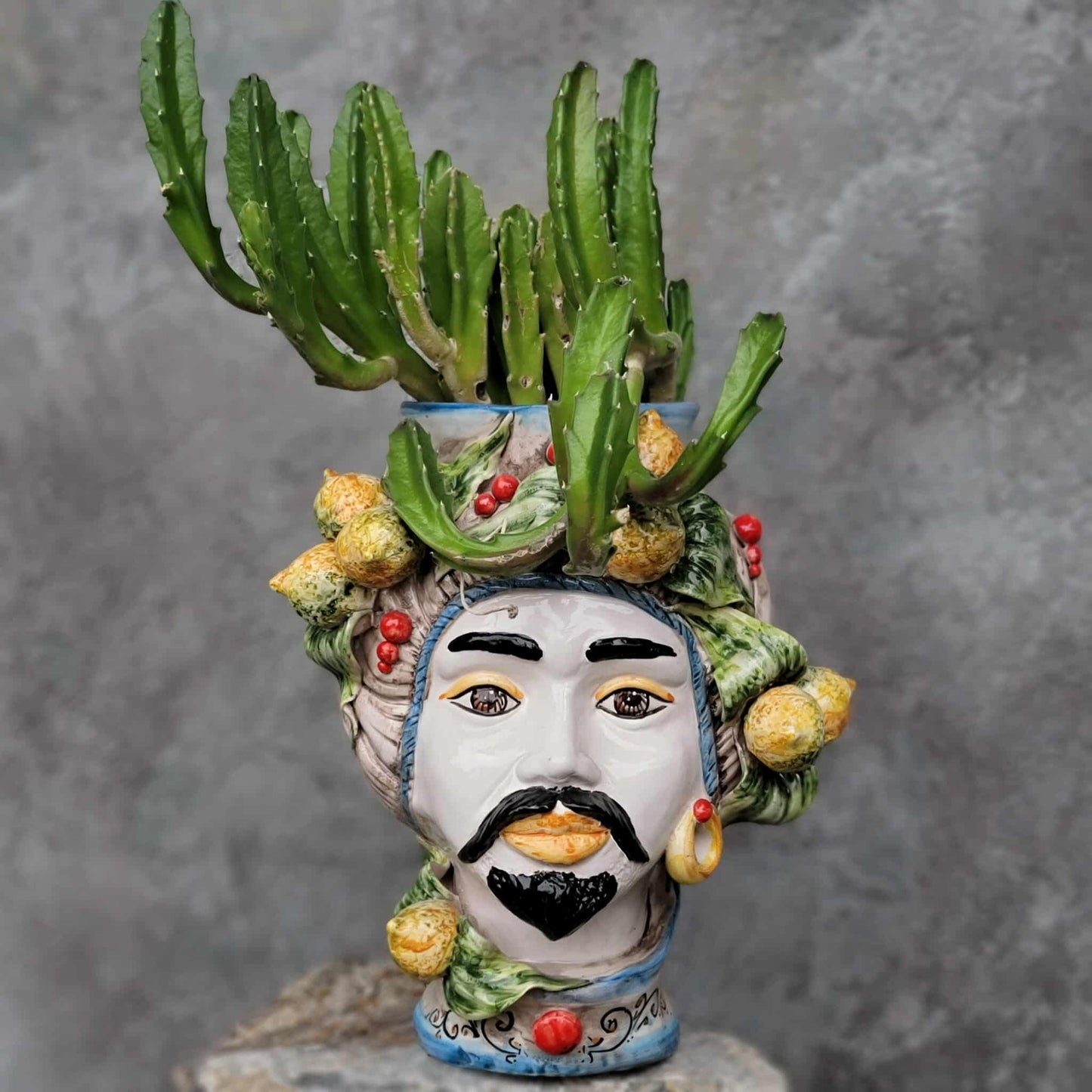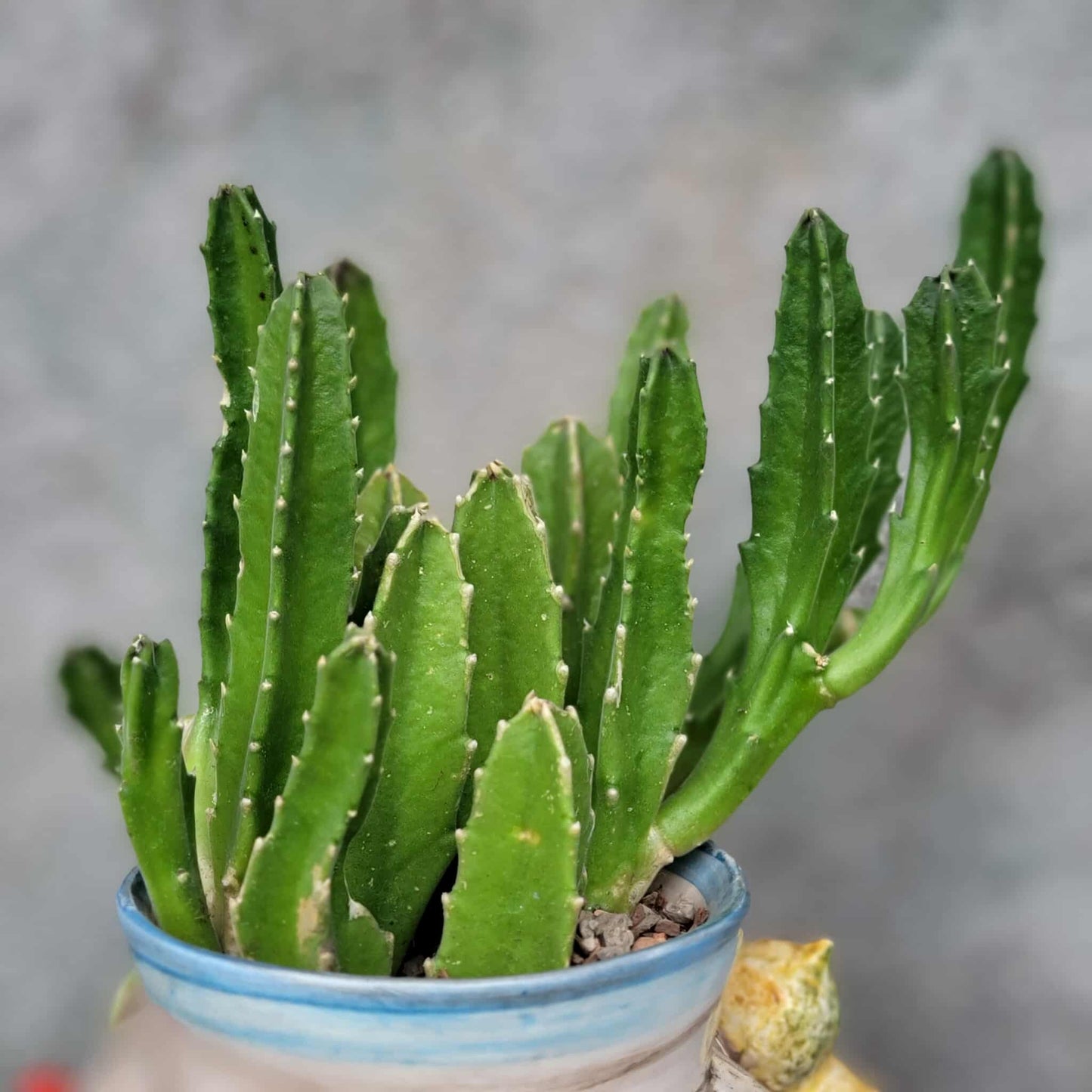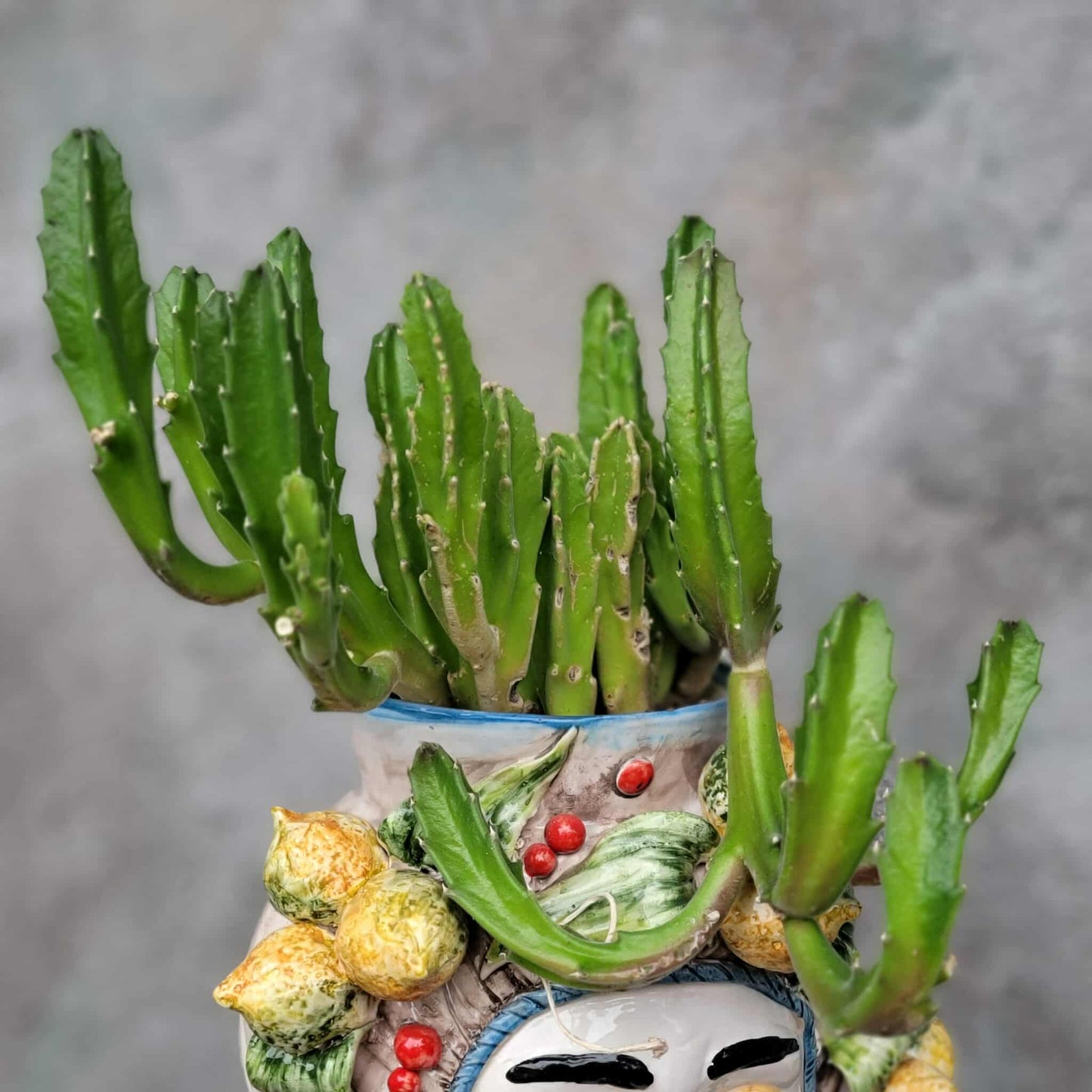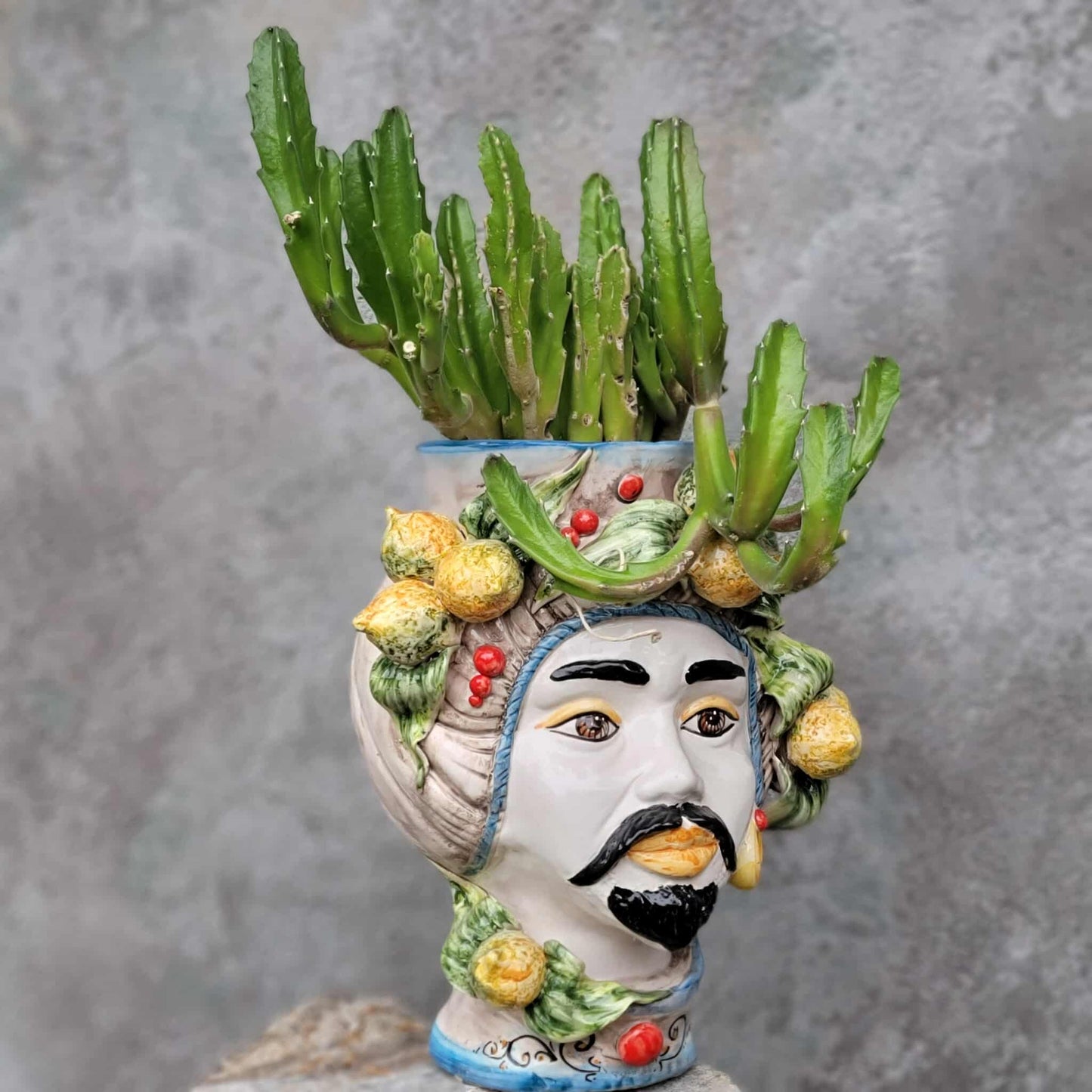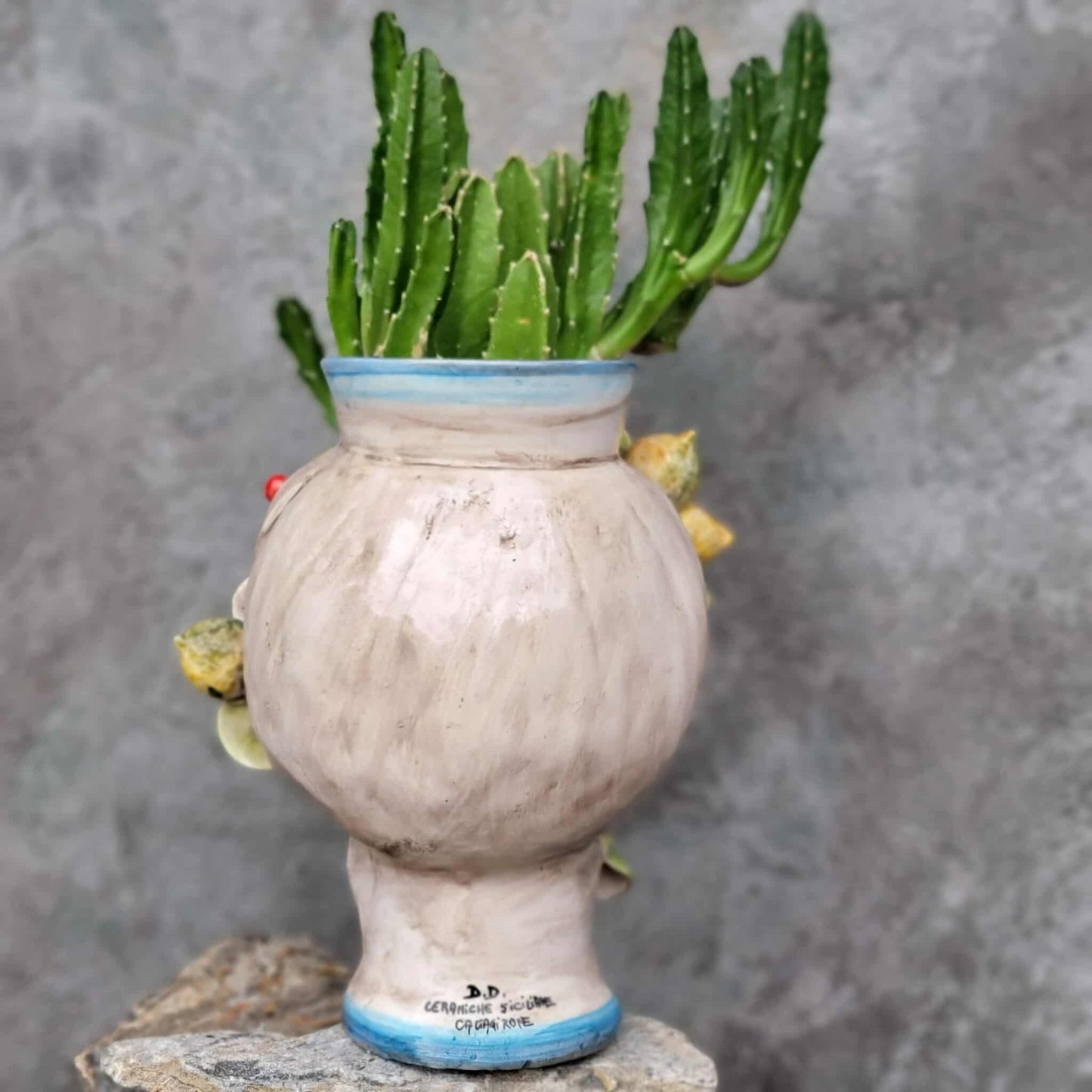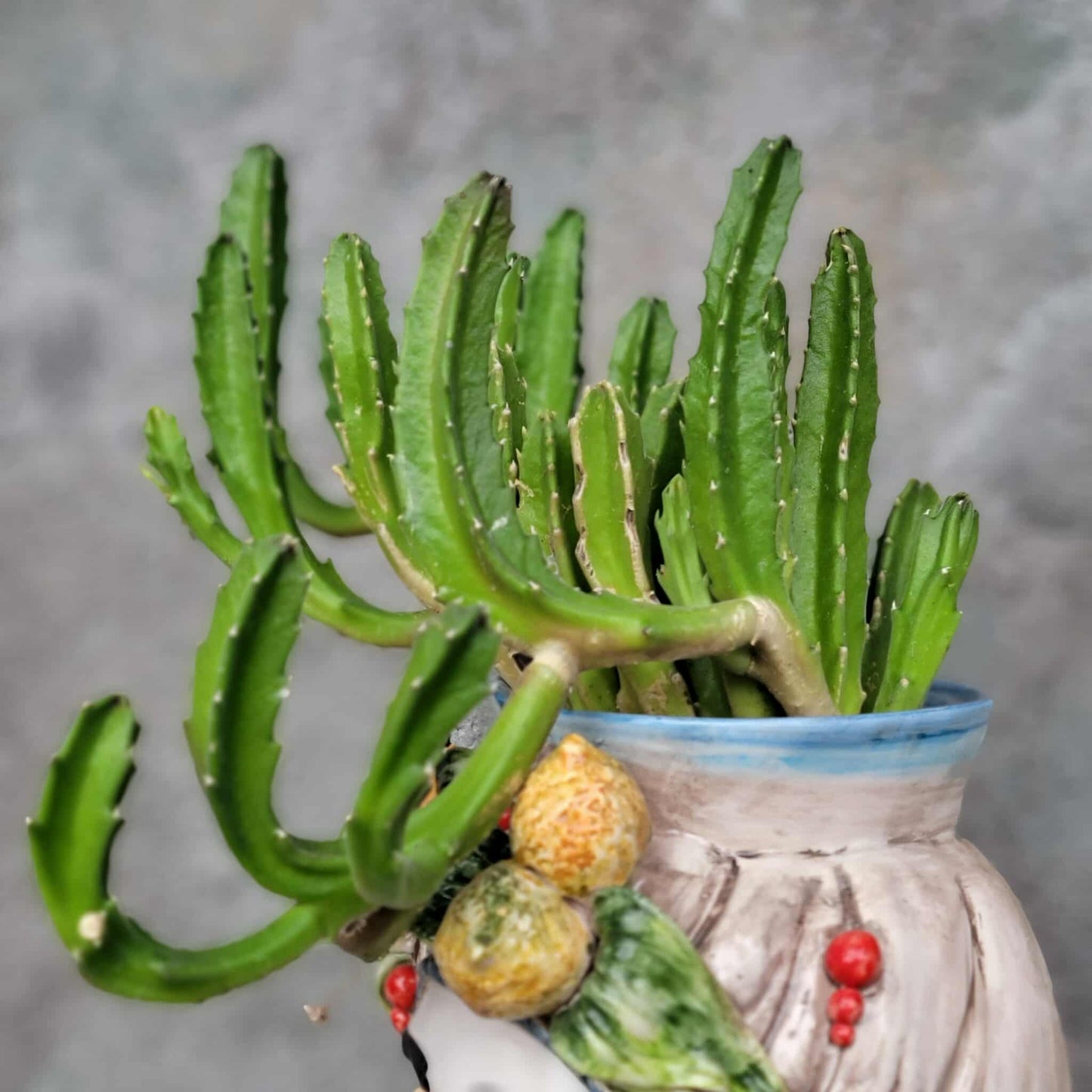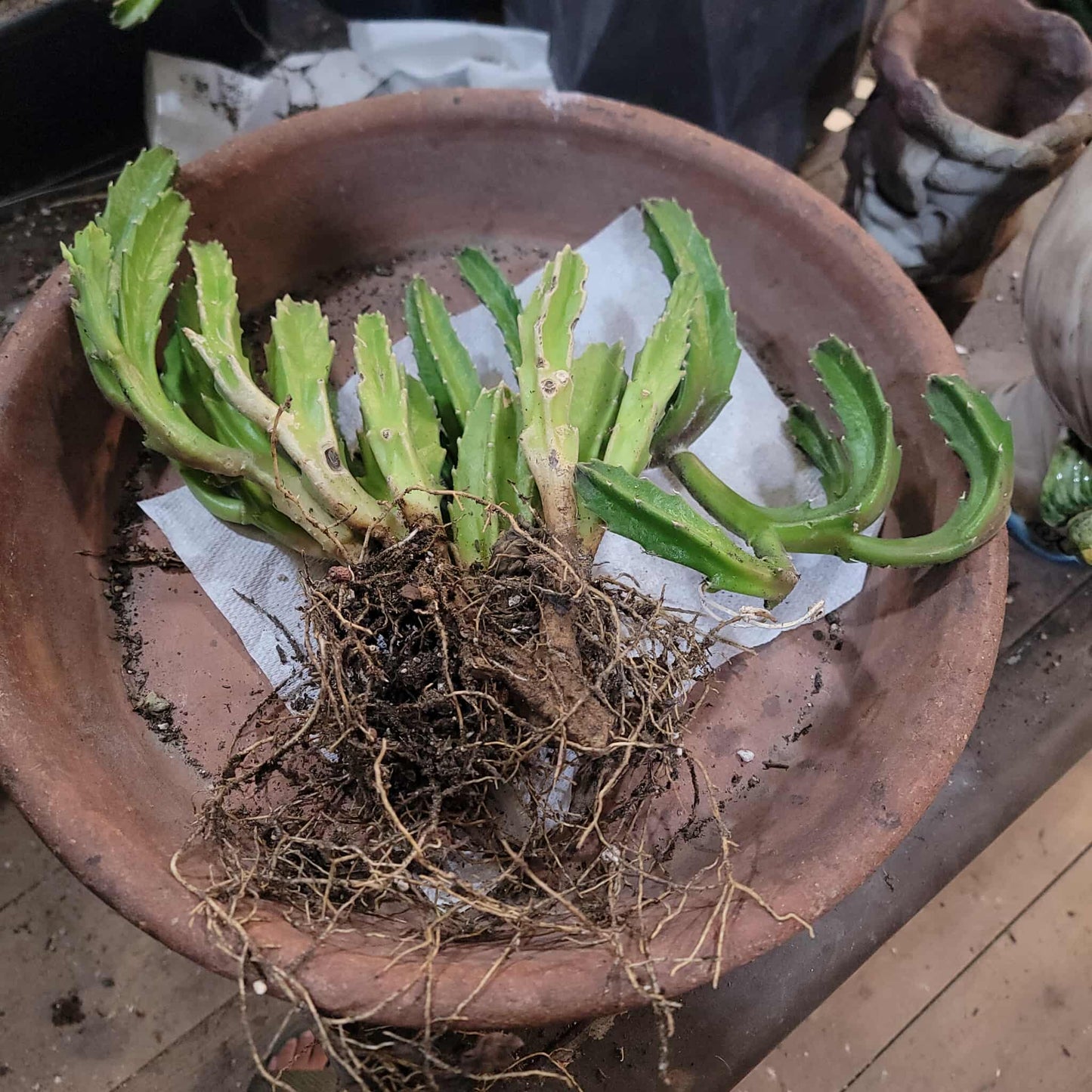Shangri-Ha Cactus Ranch
Stapelia gigantea - Carrion Plant
Stapelia gigantea - Carrion Plant
Couldn't load pickup availability
Stapelia gigantea - Carrion Plant
You will receive these exact, BIG, old specimens - there are 2 of them in this arrangement and you will receive both...
Measures 10" wide x 9" tall above the soil line as it site.
This is a very large specimen and will be a little expensive to ship.
Showcased here Italian Moor's Head (not for sale).
Will be shipped bare root.
Stapelia gigantea, commonly known as the Zulu giant, carrion flower, or starfish flower, is a spineless succulent admired for its enormous, distinctive flowers. Native to the arid regions of Southern Africa, it is most famous for producing large, star-shaped blossoms that mimic the look and smell of rotting flesh to attract pollinator flies.
KEY FEATURES
· Stems: This plant features thick, four-angled, velvety green stems that grow in clumps up to 1 foot (30 cm) tall and can spread up to 3.3 feet (1 m).
· Flowers: The fleshy, five-pointed, star-shaped flowers are the plant's most notable characteristic. They can grow up to 16 inches (40 cm) in diameter, making them one of the largest flowers in the succulent world.
· Appearance: The blooms are typically pale yellow or ochre with fine, transverse maroon or crimson lines. They are also fringed with long, silky hairs.
· Aroma: The strong, pungent odor of the flowers is similar to that of rotting meat, which lures flies for pollination. The foul scent is generally only noticeable from a close distance.
· Blooming season: In its native habitat, flowering typically occurs from late summer to fall
CARE REQUIREMENTS
· Sunlight: Stapelia gigantea thrives in bright, indirect light or partial sun. While it can tolerate full sun, intense afternoon sun may scorch the stems and cause them to turn a reddish-purple color.
· Soil: Use a well-draining, gritty cactus or succulent soil mix. Excellent drainage is crucial to prevent root rot, which is the most common cause of plant death.
· Watering: This is a drought-tolerant plant. Water thoroughly only when the soil has dried out completely. Reduce watering significantly during the dormant winter months.
· Temperature: The Zulu giant is not cold-hardy. It thrives in warm temperatures (70–95°F / 21–35°C) and should not be exposed to temperatures below 50°F (10°C) for extended periods.
· Fertilizer: Feed sparingly with a diluted, balanced liquid fertilizer designed for succulents during the spring and summer growing season.
· Propagation: This succulent is easy to propagate from stem cuttings. Allow the cut ends to callous over for a few days before planting them in well-draining soil.
· Pests: Watch for common succulent pests like mealybugs and spider mites, especially on indoor plants.
IMPORTANT CONSIDERATIONS
· Placement: Given the foul-smelling flowers, it's best to keep blooming plants away from living areas or indoors during the flowering season. The blossoms are often described as smelling like a dead mouse or rotting flesh.
· Toxicity: This plant can be toxic if ingested by pets and humans, potentially causing nausea and vomiting. Keep it out of reach of children and animals.
· Not a cactus: Despite its cactus-like stems, Stapelia gigantea is a member of the milkweed family (Apocynaceae) and does not have spines.
